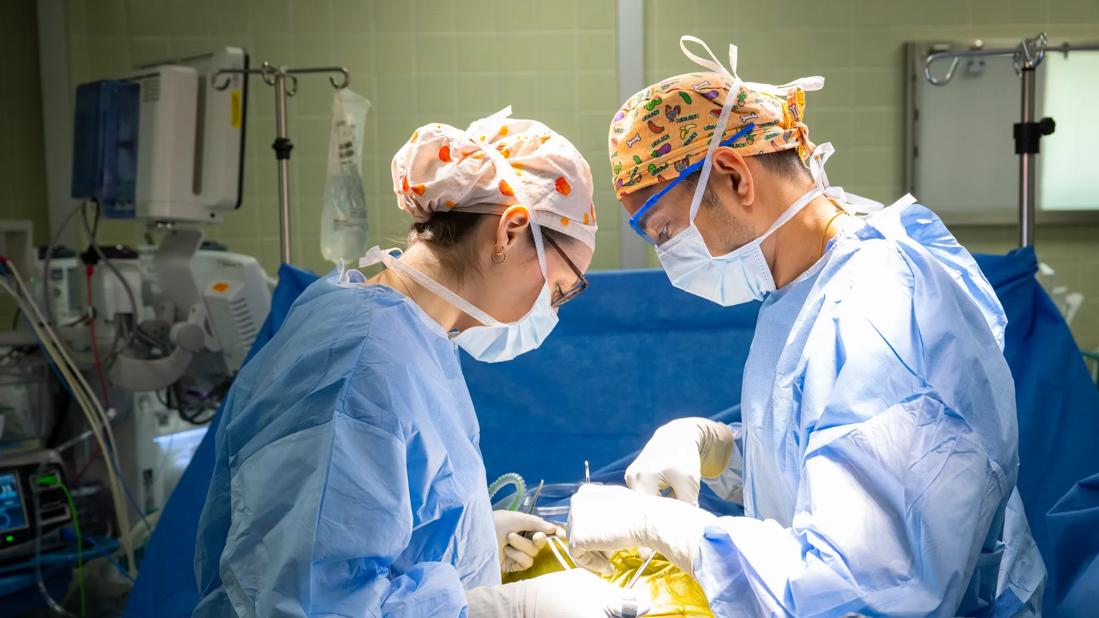
More than 20 years later, the legacy of the Women’s Health and Cancer Rights Act continues to impact the lives of countless women who have undergone breast reconstruction after mastectomy. The federal law, passed in 1998, labeled the procedure a medical necessity and required group health plans that pay for mastectomy to also cover prostheses and reconstructive procedures, regardless of timing.
Advertisement
Cleveland Clinic is a non-profit academic medical center. Advertising on our site helps support our mission. We do not endorse non-Cleveland Clinic products or services. Policy
Today, over 100,000 women a year in the U.S. undergo some form of breast reconstruction. They include individuals who have revision procedures, implant replacements, and conversions from prosthetic reconstruction to natural tissue reconstruction.
“Extending access to reconstruction surgery throughout a women’s lifetime is important because implants are not designed to last forever, and surgical and material advancements are continually improving how we restore shape, feel and sensation through breast reconstruction,” says Martin Newman, MD, Department Chair of the Department of Plastic and Reconstructive Surgery at Cleveland Clinic Florida.
One such innovation developed since the law’s passing is the use of laser-assisted indocyanine green fluorescence angiography to evaluate and preserve blood flow to natural tissue during reconstruction. Cleveland Clinic Florida was the first to perform fluorescence-guided breast reconstruction surgery which has been proven to significantly improve outcomes and reduce complications in both autologous and implant reconstructions.
“Our surgeons continue to contribute to the evolution and adoption of this indispensable technology,” says Dr. Newman. “Today’s iteration is much more compact, slightly larger than a smartphone, and can quantify captured data to generate colorized images that differentiate perfusion levels and rates.”
More recently, Dr. Newman’s team has employed 3-D technology to create surgical roadmaps of blood vessels for natural tissue reconstruction, both within the patient’s chest and the donor site, such as the abdomen, back, buttock or thigh. CT scans and a 3-D printer are used to produce a physical model of the blood vessels, which allows for detailed surgical planning and tailoring of the procedure to a patient’s unique anatomy.
Advertisement
“Combining this type of technological innovation with the advanced, less-invasive surgical techniques we use to harvest and transfer blood vessels during perforator flap procedures is another way to support good blood flow and healthy tissue, essential for a positive outcome,” Dr. Newman explains. “We are coming ever closer to achieving zero flap necrosis.”
Another area that has seen noted advancements is sensory restoration through nerve repair microsurgery. Hypoesthesia is a common issue many patients experience following mastectomy, but new techniques in breast neurotization are helping some women regain feeling in their chest.
“Today we can use cadaveric nerve grafts during implant-based reconstruction to potentially restore feeling to the reconstructed breast,” says C. Andrew Salzberg, MD, a board certified plastic and reconstructive surgeon with Cleveland Clinic Indian River Hospital recognized for his pioneering work in direct to implant reconstruction. “Likewise, microneurorrhaphy can be performed during autologous reconstruction, by joining the sensory nerve supplying the donor flap to the transected intercostal nerve.”
Fat grafting in breast reconstruction has become a more common technique in recent years for enhancing reconstructive results. Autologous breast fat grafting is used to improve deformities that are due to surgery, mastectomy, and after breast-conserving surgery. It may also be used after prior breast reconstruction to change breast size and improve the shape of the breast to achieve better symmetry.
Advertisement
“We typically harvest small volumes of fat from the abdomen or thighs over the course of several sessions to deter the occurrence of fat necrosis,” says Dr. Salzberg, noting that newer fat transfer technology also has improved fat viability. According to Dr. Salzberg, women have far more options today than ever before, in both natural tissue and prosthetic reconstruction. “Even women who underwent reconstruction just 10 or 15 years ago and are dissatisfied with their restored breasts can benefit from these new technologies and improved techniques to achieve better and more natural outcomes,” he says.
Advertisement
Advertisement

Cleveland Clinic Weston Hospital’s collaborative model elevates care for complex lung diseases

Interventional pulmonologists at Cleveland Clinic Indian River Hospital use robotic technology to reach small peripheral lung nodules

Trained in the use of multiple focal therapies for prostate cancer, Dr. Jamil Syed recommends HIFU for certain patients with intermediate-risk prostate cancer, especially individuals with small, well-defined tumors localized to the lateral and posterior regions of the gland.

Cleveland Clinic Weston Hospital is actively recruiting patients for an international, multicenter, phase III study comparing MIS versus open interval cytoreduction following neoadjuvant chemotherapy in patients with stage IIIC-IV epithelial ovarian cancer.

Urologic oncologist with Cleveland Clinic in Florida performs robotic-assisted retroperitoneal lymph node dissection.

Cleveland Clinic researchers in Florida identify unexpected survival benefit

Noninvasive, radiation-free imaging supports treat-to-target IBD care

Cleveland Clinic in Florida transplant specialists perform advanced surgical approach for living kidney donation